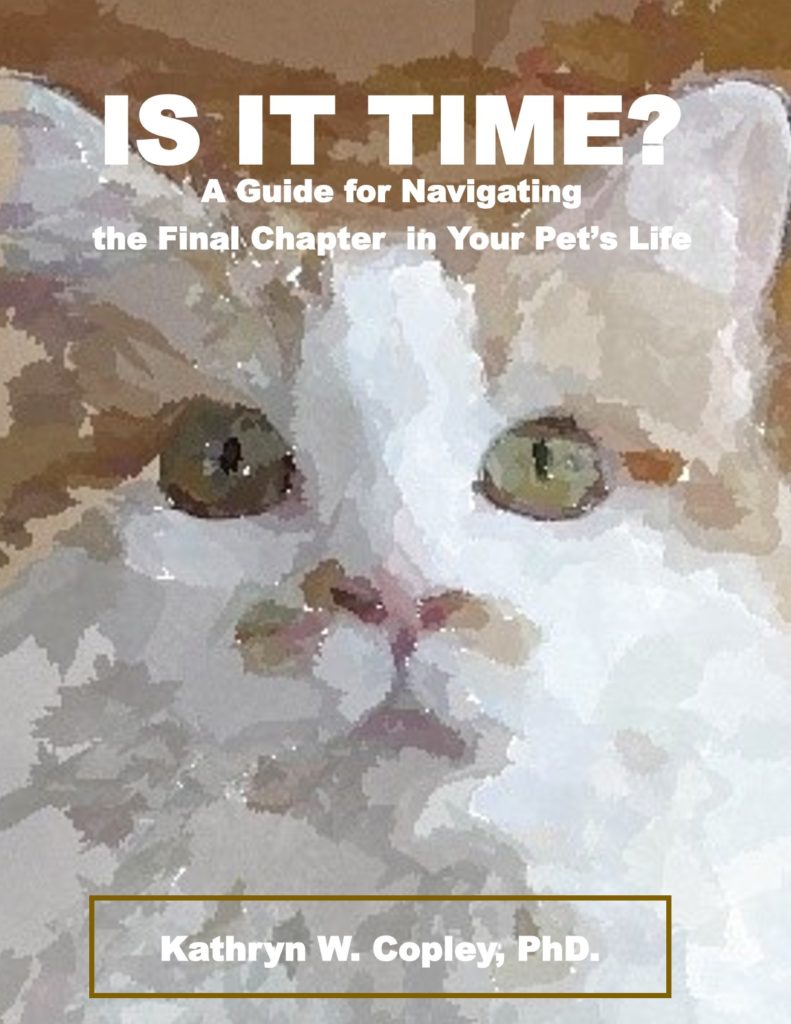
“Duke had been losing weight. It turned out to be an overactive thyroid and the only viable option was radiation. It added a happy year to his life. It was worth it.” Kathy, who was owned by Duke

“Ginger (closest to Alan) had cancer which was treated for 7 months, during which time she acted ‘normal.’ She went downhill — couldn’t walk and was in pain. The vet and I agreed it was time.” Alan, who was owned by Ginger
“Such short little lives our pets have to spend with us, and they spend most of it waiting for us to come home each day. It is amazing how much love and laughter they bring into our lives and even how much closer we become with each other because of them.”
JOHN GROGAN, Marley and Me: Life and Love with the World’s Worst Dog

Zuzu’s zest for life carried him through several years of megacolon, which in his case was irreversible but treatable. He required extensive care but his mega-watt personality didn’t desert him even after cancer caused a precipitous decline. Zuzu, who owned Kathy
IS IT TERMINAL -- OR TREATABLE?
When that audacious kitten or spirited puppy first caught your eye, the decision whether or not to end its suffering didn’t enter your mind. Most of us will outlive our cherished pets, so most of us who bring companion animals into our lives will have to face the sad reality of their mortality. It may come after years of warm companionship, or with the suddenness of an accident, or in the slow decline of a debilitating illness. But it will come. Our wish for them to live forever is just a wish.
The moment has come when you see a noticeable difference in your pet’s body or behavior. Running your hand down your dog’s neck, you feel a lump you never felt before. You notice that the water bowl needs more frequent filling – or the food bowl needs less frequent filling. A pet that has never messed in the house before starts to. A limp, lethargy, incontinence, weight loss — something makes you wonder if your pet is OK.
Rely on your veterinarian
If you don’t have an ongoing relationship with a veterinarian, this is the time to establish one. It’s up to you to make decisions about your pet, but you don’t have to make them alone. Your vet has the information – or can perform the tests that will clarify the information — on your pet’s condition and prognosis.
The uncurable may be treatable
Even conditions that can’t be cured may have management options that will extend your pet’s life and improve its quality. With medication, special diets and sub-cutaneous fluids, illnesses such as diabetes, irritable bowel disease and renal failure, to name a few, can be controlled enough to add months or even years of good quality of life. Your pet can grow old with dignity – and your assistance.
All the named animals pictured in this blog were someone’s treasured pet. They may have crossed the Rainbow Bridge, but their absence makes them no less beloved.



I may not know what tomorrow will bring, but remember…today I have you.